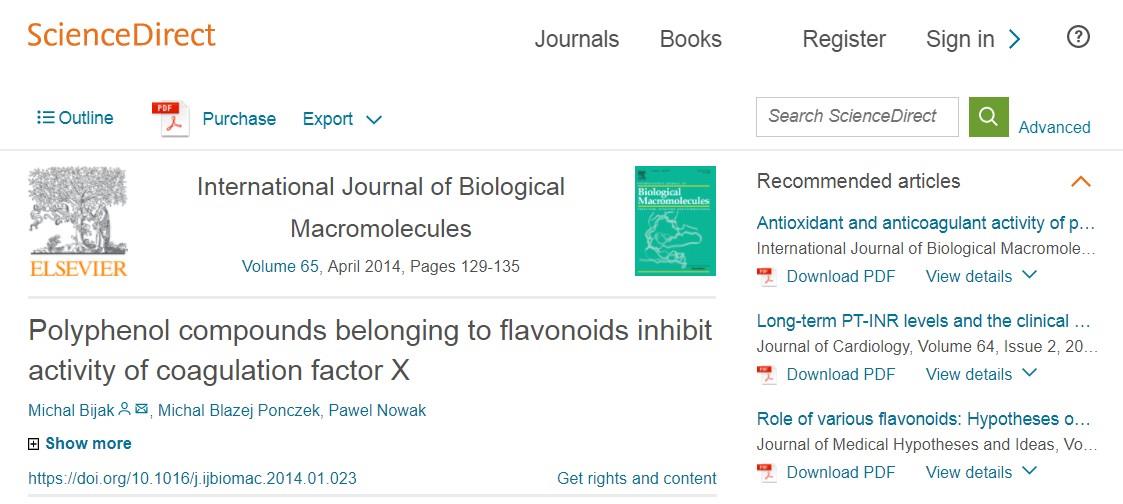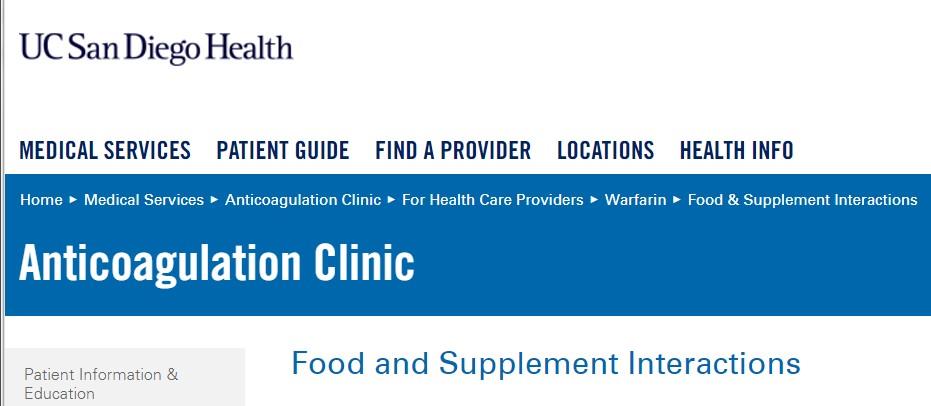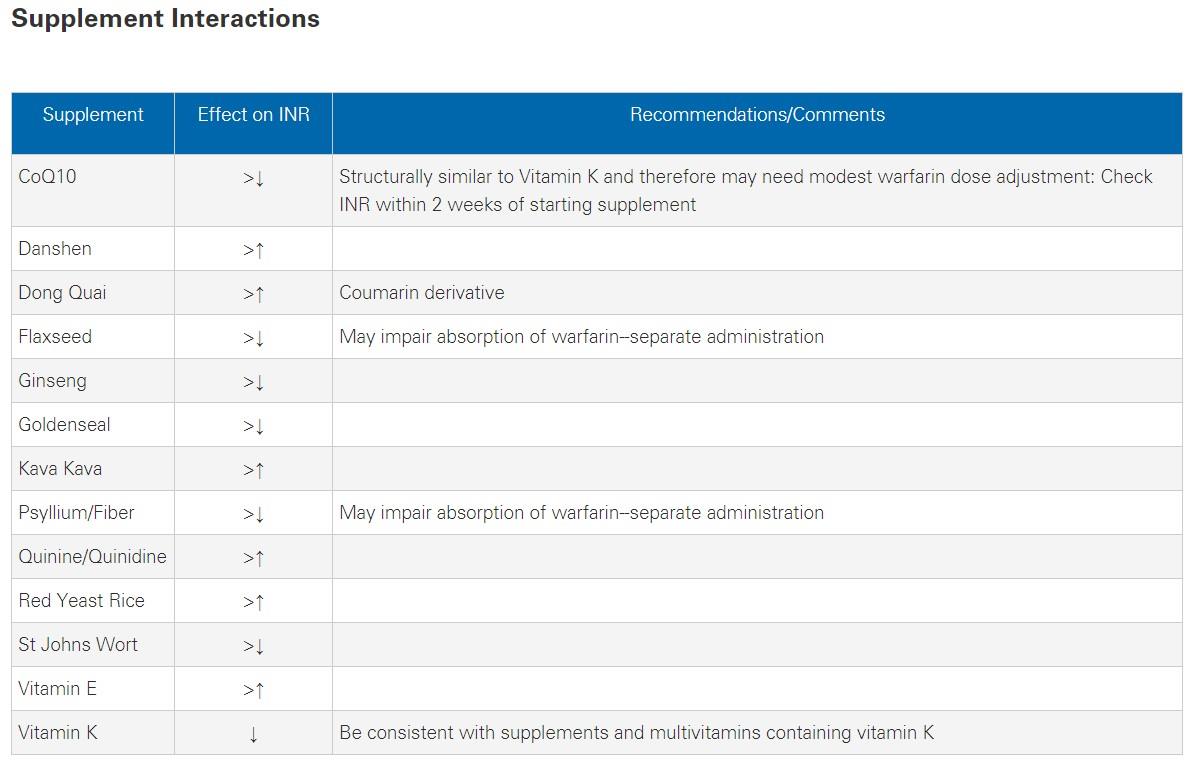Factor X Inhibition? Cardiac Health Supplements / Polyphenol Compounds & Considerations Regarding Hemostasis…

Editor’s Note:
Had an unusual presentation of unexpected post op bleeding the other day with a patient that had no concomitant coagulation issues nor other co-existing disease states that would possibly contribute or amplify post CPB hemostasis.
Normally I would write this off as the “the less-than-extraordinary transcendence of damage to general hemostasis” that occurs as a consequence of the impact the ECC has on the coagulation pathway as a whole.
It was a short run, younger patient, and an unexpected oddity that was significant enough to look deeper into what issues may or may not have been contributory to the ultimate transfusion of packed cells, FFP, and Novo VII that 20 years ago wouldn’t have been looked at- but with today’s’ precision regarding the ability to anticipate potential bleeding issues- THIS was somewhat of a surprise.
What did show up retrospectively was not what we might have anticipated in the predictive model for screening/risk assessment provided by STS harvest data (ie: BB, Statins, ACE, Anti platelet Rx and on and so on), but we did discern the documented use of a Polyphenol Compound, ostensibly used to improve this patient’s heart health.
So I looked into it a bit- obviously this is premature, and a bit of a reach- however some of the scientific data collected on the impact of some Polyphenol compounds therapy suggests that they may have an inhibitory influence on Factor X? We are all aware that there are too many clinical permutations that interact and coalesce during the perioperative course of an open heart procedure- making it a guessing game regarding connecting the dots so to speak- to identify a clear causal relationship of what traumatizes the coagulation pathway to the point that it results in the transfusion of blood products.
What is clear however, is that in our profession it is an incumbent responsibility for us too at least look and come up with something more than a clinical shrug- basically enunciated as a fatalistic end result implying “it is what it is”. To pass it off as “an undefinable and unique event- is reminiscent of the Ostrich head buried in the sand”.
There is ALWAYS a reason.
I’ll leave it to you to draw your own conclusions and make your own suggestions 🙂
Have a truly safe and excellent day 🙂
Frank
Click Image Above to View Source Article
![]()
Abstract
Blood coagulation consists of series of zymogens which can be converted by limited proteolysis to active enzymes leading to the generation of thrombin and conversion of fibrinogen into fibrin by this enzyme. The activated factor X (FXa) forms prothrombinase complex on phosphatidylserine containing surface which is responsible for conversion of prothrombin to thrombin. One molecule of FXa generates more than 1000 thrombin molecules. Therefore FXa is a novel target for modern anticoagulant therapy.
The aim of our present study is to examine the effects of the well-known plant polyphenolic compounds on factor Xa amidolytic activity and characterization of these interactions using bioinformatic ligand docking method.
We observed that only four polyphenols belonging to flavonoids group: procyanidin B2, cyanidin, quercetin and silybin, had inhibitory effect on FXa activity. Bioinformatic analyses revealed that procyanidin B2, cyanidin, quercetin and silybin bound in the S1–S4 pockets located in vicinity of the FXa active site and blocked access of substrates to Ser195.
The results presented here showed that flavonoids might be potential structural bases for design of new nature-based, safe, orally bioavailable direct FXa inhibitors…
![]()
Click Image Above to View Source Article
![]()
Abstract
Thrombin, also known as an active plasma coagulation factor II, belongs to the family of serine proteases and plays a crucial role in blood coagulation process. The process of thrombin generation is the central event of the hemostatic process and regulates blood coagulant activity. For this reason, thrombin inhibition is key to successful novel antithrombotic pharmacotherapy. The aim of our present study was to examine the effects of the well-known polyphenolic compounds on the activity of thrombin, by characterization of its interaction with selected polyphenols using different biochemical methods and biosensor BIAcore analyses. Only six compounds, cyanidin, quercetin, silybin, cyanin, (+)-catechin and (−)-epicatechin, of all examined in this study polyphenols caused the inhibition of thrombin amidolytic activity. But only three of the six compounds (cyanidin, quercetin and silybin) changed thrombin proteolytic activity. BIAcore analyses demonstrated that cyanidin and quercetin caused a strong response in the interaction with immobilized thrombin, while cyanin and (−)-epicatechin induced a low response. Lineweaver–Burk curves show that used polyphenol aglycones act as competitive thrombin inhibitors. Our results suggest that polyphenolic compounds might be potential structural bases and source to find and project nature-based, safe, orally bioavailable direct thrombin inhibitors.








